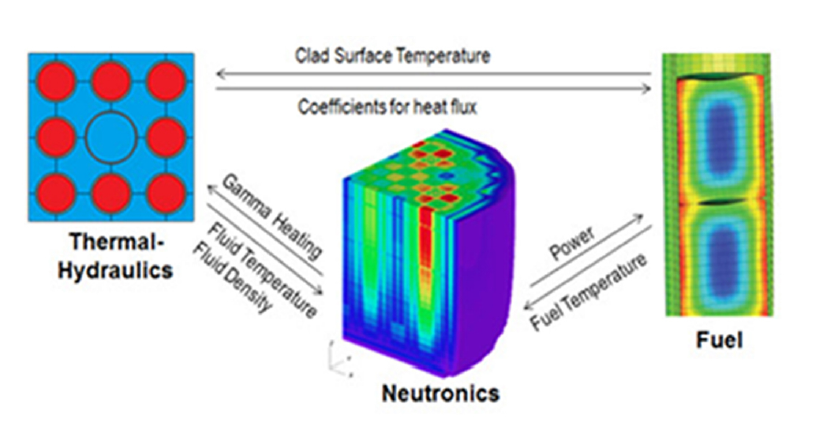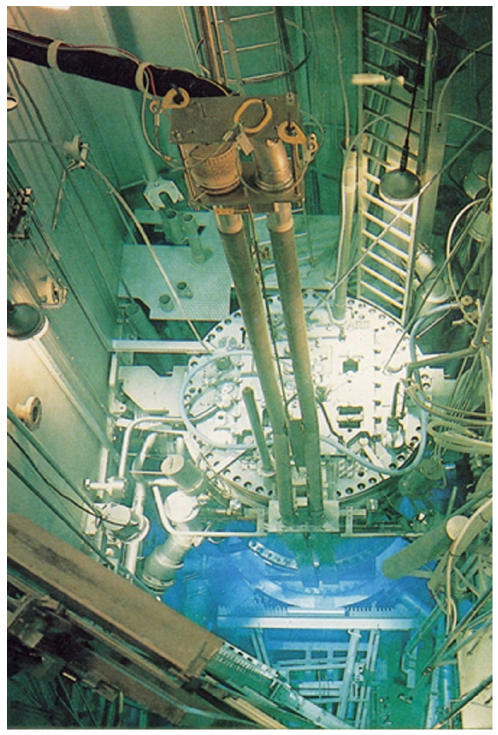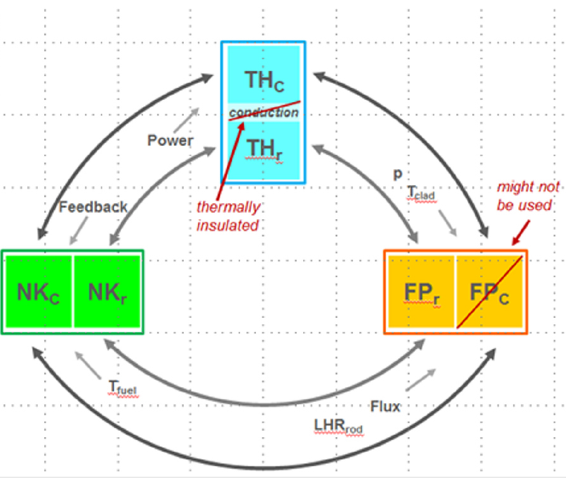Welcome to MPCMIV Website!
Multiphysics Pellet Clad Mechanical Interaction Validation benchmark
Nowadays, the demand for an advanced reactor modelling tool of multiple physics phenomena has sharply increased. Moreover, the challenges constituted by the accurate and realistic simulation of some multi- physics phenomena are of great concern in the industrial environment. In this context, Pellet Cladding Interaction (PCI) is one of the more interesting multi-physics, multi-scale problems; possible PCI fuel failures reduce reactor performance related to power uprates, higher burnup and fuel rod manufacturing quality.


With these purposes, N.IN.E. in cooperation with Studsvik, has proposed the Multi-Physics Pellet Cladding Mechanical Interaction Validation (MPCMIV) benchmark, that is fully consistent with the objectives of the OECD/NEA Expert Group on Multi-Physics Experimental Data, Benchmarks and Validation (EGMPEBV) and in particular with the following ones:
The MPCMIV benchmark initiative is based on suitable experiments that require coupling between the Reactor Physics, Thermal-Hydraulics and Fuel Performance tools for achieving a high fidelity simulation. The selected cases are cold ramp tests assessed in the Studsvik R2 tank-in-pool testing reactor (the R2 core domain) that has an in-pile U-Tube system loop where the fuel rodlet is positioned (the fuel rodlet domain). The aim was to investigate the fuel response at cold criticality conditions. This is because, for transients occurring at temperatures below 100 °C, the cladding mechanical properties and the potential failure mechanisms might substantially differ from those at normal operation. The test was performed with an ad-hoc procedure. Firstly, the rod was held in cold conditions. Subsequently, it was exposed to a relatively fast power transient, in which the maximum power generation in the rod increased from practically zero to 45 kW/m or more in about 5 seconds. The heat flux and the fuel temperature reached their maximum values 10-15 seconds after the end of the power ramp. Finally, the experiment was stopped with a manual reactor shutdown.

Although the challenging nature of the selected experiment seems more appropriate for novel methods, a three tiered structure of fidelity has been proposed, in order to accommodate as many participants and computational tools as possible:
For each Tier, the MPCMIV benchmark is planned to be structured into four main phases:

With these purposes, N.IN.E. in cooperation with Studsvik, has proposed the Multi-Physics Pellet Cladding Mechanical Interaction Validation (MPCMIV) benchmark, that is fully consistent with the objectives of the OECD/NEA Expert Group on Multi-Physics Experimental Data, Benchmarks and Validation (EGMPEBV) and in particular with the following ones:
- Methodologies for validation of single and coupled physics phenomena.
- Derivation of validation requirements.
- Derivation of an accuracy metric.
- Uncertainty methodologies to extrapolate beyond the validation domain.

The MPCMIV benchmark initiative is based on suitable experiments that require coupling between the Reactor Physics, Thermal-Hydraulics and Fuel Performance tools for achieving a high fidelity simulation. The selected cases are cold ramp tests assessed in the Studsvik R2 tank-in-pool testing reactor (the R2 core domain) that has an in-pile U-Tube system loop where the fuel rodlet is positioned (the fuel rodlet domain). The aim was to investigate the fuel response at cold criticality conditions. This is because, for transients occurring at temperatures below 100 °C, the cladding mechanical properties and the potential failure mechanisms might substantially differ from those at normal operation. The test was performed with an ad-hoc procedure. Firstly, the rod was held in cold conditions. Subsequently, it was exposed to a relatively fast power transient, in which the maximum power generation in the rod increased from practically zero to 45 kW/m or more in about 5 seconds. The heat flux and the fuel temperature reached their maximum values 10-15 seconds after the end of the power ramp. Finally, the experiment was stopped with a manual reactor shutdown.
Although the challenging nature of the selected experiment seems more appropriate for novel methods, a three tiered structure of fidelity has been proposed, in order to accommodate as many participants and computational tools as possible:
- Tier-1 (for Novel tools): 3D heterogeneous model of the R2 reactor and fuel rodlet (3D deterministic core physics simulator of both R2 core domain and fuel rodlet domain).
- Tier-2 (for Novel tools - simplified): The benchmark team will generate a cross-section data set for the R2 reactor and then perform a core physics calculation (e.g. with a nodal diffusion code) in order to obtain the boundary conditions (i.e. neutron and gamma fluxes) for the fuel rodlet domain. These boundary conditions will then be used by the participants for developing a high-fidelity model of the fuel rodlet domain.
- Tier-3 (for Traditional tools): Similar procedure to Tier-2 but the modeling is conducted with traditional tools. In this case the cross-section generation step is needed.
For each Tier, the MPCMIV benchmark is planned to be structured into four main phases:
- 1. The Development phase.
- 2. The Pre-Qualification phase (data based on calibration ramp – empty rodlet – and initial ramp with the BWR rodlet).
- 3. The Blind Simulation phase (data based on a repeated ramp with the BWR rodlet), including uncertainty analysis (the results will not be attributed to any particular organization on the NEA’s reports - of course, the individual participants are free to publish their results openly).
- 4. The Open or Post-Test phase, including sensitivity analysis.

